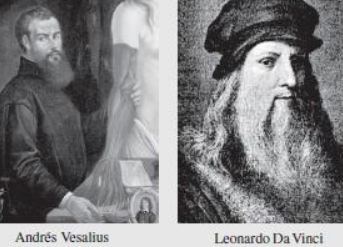Arte, ciencia y medicina en el Renacimiento. Leonardo Da Vinci y Andrés Vesalio
Palabras clave:
HUMANISMO, CIENCIA, ARTE, MEDICINA..Resumen
Introducción: Leonardo Da Vinci y Andrés Vesalio destacan por ser representantes del nuevo pensamiento promovido por Renacimiento, etapa que marcó pautas para el desarrollo de la cultura y la ciencia en general anclado en la doctrina del Humanismo.
Objetivo: exponer una síntesis de aspectos trascendentales de la obra de dos destacados pensadores humanistas del Renacimiento; Leonardo Da Vinci (1452 – 1519) y Andrés Vesalio (1515 – 1564)
Método: se recopilaron materiales de diferentes fuentes bibliográficas, la Enciclopedia de Historia de la Medicina, la Antología de Historia de la Filosofía, así como otros artículos de Sociología, Economía, Historia, Arte y Medicina disponibles en revistas especializadas y en Internet, procesados a través de métodos del nivel empírico como la observación y la descripción y del nivel teórico como análisis - síntesis y el histórico – lógico.
Resultados: un artículo que profundiza en el legado humanista del Renacimiento, a través de las correspondencias entre arte, ciencia y medicina en la obra de dos reconocidos representantes del conocimiento de avanzada en la transición europea del medioevo a la modernidad.
Conclusiones: a través de la síntesis de aspectos trascendentales de la obra de Leonardo Da Vinci y Andrés Vesalio, acudimos al rescate de su legado para incorporarlo como parte de la cultura general y de la cultura médica de los profesionales del sector de la salud, desde sus respectivas posturas profesionales incursionaron en la anatomía y la pintura como componentes esenciales de la medicina científica que comienza a ver la luz durante los siglos mencionados.
Descargas
Citas
1. Del Renacimiento a la Modernidad. En Historia de la Filosofía. Antología. Tomo III. La Habana: Editorial Félix Varela; 2011.
2.Roa García R. El alba de la modernidad. En Historia de las doctrinas sociales. La Habana: Ediciones Memoria: 2001.
3.Engels F. Dialéctica de la Naturaleza. Introducción. La Habana: Editora Política; 1979.
4.Bernal Jonh D. Arte, naturaleza y medicina. En Historia social de la ciencia. La Habana; Editorial de Ciencias Sociales: 1981.
5.Arenas N, Bozo E. Impacto renacentista en las artes, en la anatomía, en la medicina y en enfermería. Salus [En línea]. 2009 [consulta: 2018 julio 13]; 13(1): 50-6. Disponible en: http://www.redalyc.org/pdf/3759/375938989010.pdf
6.Díaz Sosa F. La relación histórica filosofía - medicina dese la antigüedad griega hasta el siglo XVIII. El Renacimiento. En Selección de artículos de filosofía, salud y sociedad. La Habana: Editorial Ciencias Médicas; 2011.
7.Pérez Pérez OF. El renacimiento. Desarrollo de la Anatomía. Los artistas plásticos. En De los albores a los albores. Un recorrido por la historia de la medicina. La Habana: Editorial Ciencias Médicas; 2011.
8.García Guerrero M. Medicina y arte. La revolución de la anatomía en el Renacimiento. Rev Cient Soc Esp Enferm Neurol [En línea]. 2012 Jun [consulta: 2018 julio 13]; 35(0): 25-7 Disponible en: http://www.elsevier.es/es-revista-revista-cientifica-sociedad-espanola-enfermeria-319-articulo-medicina-arte-la-revolucion-anatomia-X201352461242765X
9.Topolanski Ricardo. La Lección de Anatomía - Medicina y Arte. TARINGA[En línea]. 2009 Disponible en: http://www.taringa.net/posts/imagenes/2394756/La-Leccion-de-Anatomia---Medicina-y-Arte.html
10.Leonardo da Vinci, el genio del Renacimiento. AstroMía. Disponible en:http://www.astromia.com/biografias/davinci.htm
11.Fernández G. LEONARDO DA VINCI: obras y mitos [En línea]. [consulta: 2018 julio 13]. Disponible en: http://www.theartwolf.com/leonardo_es.htm
12.Colmenares Arreaza G. Leonardo Da Vinci. Sus aportes a la medicina (1452-1519). Colección Razetti [En línea]. 2013 [consulta: 2018 julio 13]; Vol XIV(13): 517-530. Disponible en: https://blogs.uprm.edu/huma3112/files/2013/12/DaVinci-y-la-Medicina.pdf
13.Vesalio: Figura del Renacimiento y padre de la anatomía moderna. GALENUS [En línea]. 2003 [consulta: 2018 julio 13]; 15(1). Disponible en http://www.galenusrevista.com/?Vesalio-Figura-del-Renacimiento-y
14.Vesalio A. TRES INNOVADORES: VESALIO, PARACELSO Y GILBERT- Ciencias Renacentista [En línea]. 2011 Nov [consulta: 2018 julio 13]. Disponible en: https://lacienciarenacentista.wordpress.com/category/personajes-del-renacimiento/andres-vesalio/
15.Romero RR. Andrés Vesalio(1514-1564). Fundador de la Anatomía Humana moderna. Int. J. Morphil. [En línea], 2007 [consulta: 2018 julio 13]; 25(4): 847-50. Disponible en: https://scielo.conicyt.cl/pdf/ijmorphol/v25n4/art26.pdf
16.Topolanski R. Obra el arte y la medicina. En: Cirugía. Capítulo 6 [En línea]. [consulta: 2018 julio 13]. Disponible en: http://www.smu.org.uy/publicaciones/libros/textocompleto/arte-y-medicina/arte-y-medicina6.pdf
17.Muñoz L.A. Aporte científico de Andrés Vesalio [En línea]. [consulta: 2018 julio 13]. Disponible en: https://es.scribd.com/doc/297371061/Aporte-Cientifico-de-Andres-Vesalio

Publicado
Cómo citar
Número
Sección
Licencia
Aquellos autores/as que tengan publicaciones con esta revista, aceptan los términos siguientes:- Los autores/as conservarán sus derechos de autor y garantizarán a la revista el derecho de primera publicación de su obra, el cuál estará simultáneamente sujeto a la Licencia de reconocimiento de Creative Commons que permite a terceros compartir la obra siempre que se indique su autor y su primera publicación esta revista.
- Los autores/as podrán adoptar otros acuerdos de licencia no exclusiva de distribución de la versión de la obra publicada (p. ej.: depositarla en un archivo telemático institucional o publicarla en un volumen monográfico) siempre que se indique la publicación inicial en esta revista.
- Se permite y recomienda a los autores/as difundir su obra a través de Internet (p. ej.: en archivos telemáticos institucionales o en su página web) antes y durante el proceso de envío, lo cual puede producir intercambios interesantes y aumentar las citas de la obra publicada. (Véase El efecto del acceso abierto).


